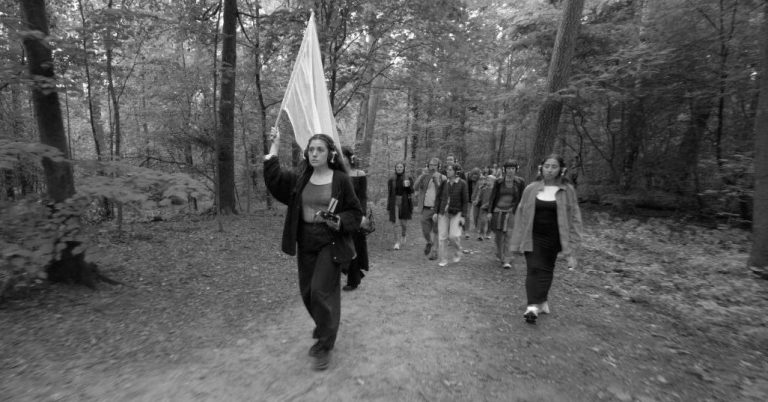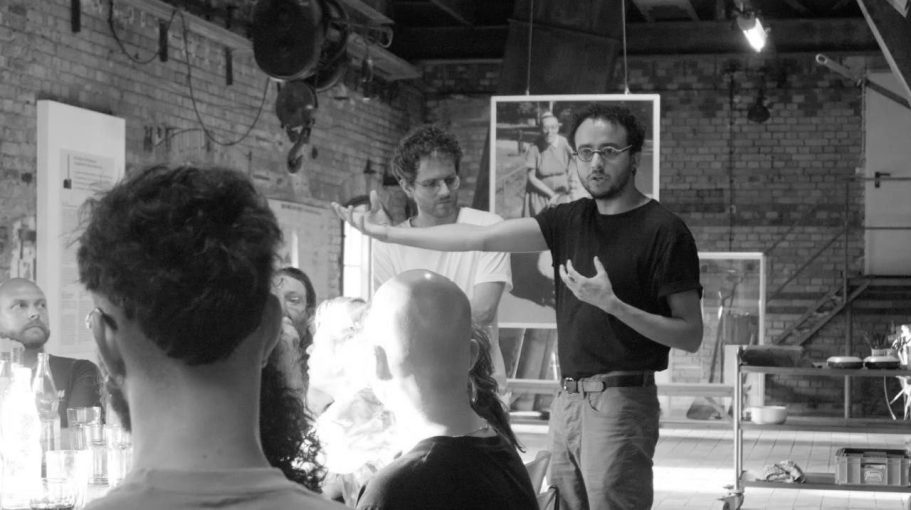
Site-Specific Artistic Residency and Festival
OPEN CALL
and more info on ONSITE 2025 in June
ONSITE is a short-term laboratory of site-specific experimentation and collaborative creation. Through intuitive cartography, shared practices and collective not-knowing, multidisciplinary artists and researchers develop personal and communal approaches to a territory, space or institution.
The two-day festival takes place in changing locations in partnership with local cultural institutions and in a participatory dialogue with the neighbourhood.
We understand site-specific research as the investigation of the relationship of a place with both the territory or space it is embedded in and the subjects that inhabit or pass through it. As living beings, we claim territories by fighting over them or working them, by confining them or defining them. We desert them or breathe life into them. So do the non-living: A mountain casting a shadow on a hot afternoon defines a new territory in which both humans and non-humans share a sense of relief when the temperature drops and the humidity rises, when new smells and colours emerge, and the living world finds itself really present in the shaded reality created by the animated material world.
In their apparent static locality, the experience of sites can be as multiple and ephemeral as the personal relationships established with them. A forest, for example, feels very different from the perspective of the hunter, botanist, walker, nature enthusiast or fairy-tale storyteller. And as the biologist Jakob von Uexküll noticed: Even the stem of a flower becomes a very versatile element in such forest, whether it is experienced in relation to the environment of the boy picking the flower to put it behind his ear, the ant using it as a path on its way to the goblet, the larvae drilling holes in it to reach the juices that make its liquid house or finally the deer that simply chews and swallows it as food. And, of course, the forest can also turn into an archaeological site that tells us stories of a distant past. It points us to the origins of human civilizations, or provides proof of the existence of species that have been extinct for thousands of years.
How do these distant pasts on site resonate in our lives still today?
And what might be the traces of our existence to be found in the distant future?
The Site


Po:era
ONSITE festival is hosted by the interdisciplinary collective Po:era. Lucas Lacerda and Daniel Weyand create immersive experiences at the intersection of performance, sound and audio-visual art. In their site-specific research they engage with the material, imaginary and living qualities of a space to uncover its stories and paths to the future or to create connective, sense-based encounters with its human and non-human inhabitants.

Wir benötigen Ihre Zustimmung zum Laden der Übersetzungen
Wir nutzen einen Drittanbieter-Service, um den Inhalt der Website zu übersetzen, der möglicherweise Daten über Ihre Aktivitäten sammelt. Bitte überprüfen Sie die Details in der Datenschutzerklärung und akzeptieren Sie den Dienst, um die Übersetzungen zu sehen.